Corsets- a shopper’s guide.
Posted on
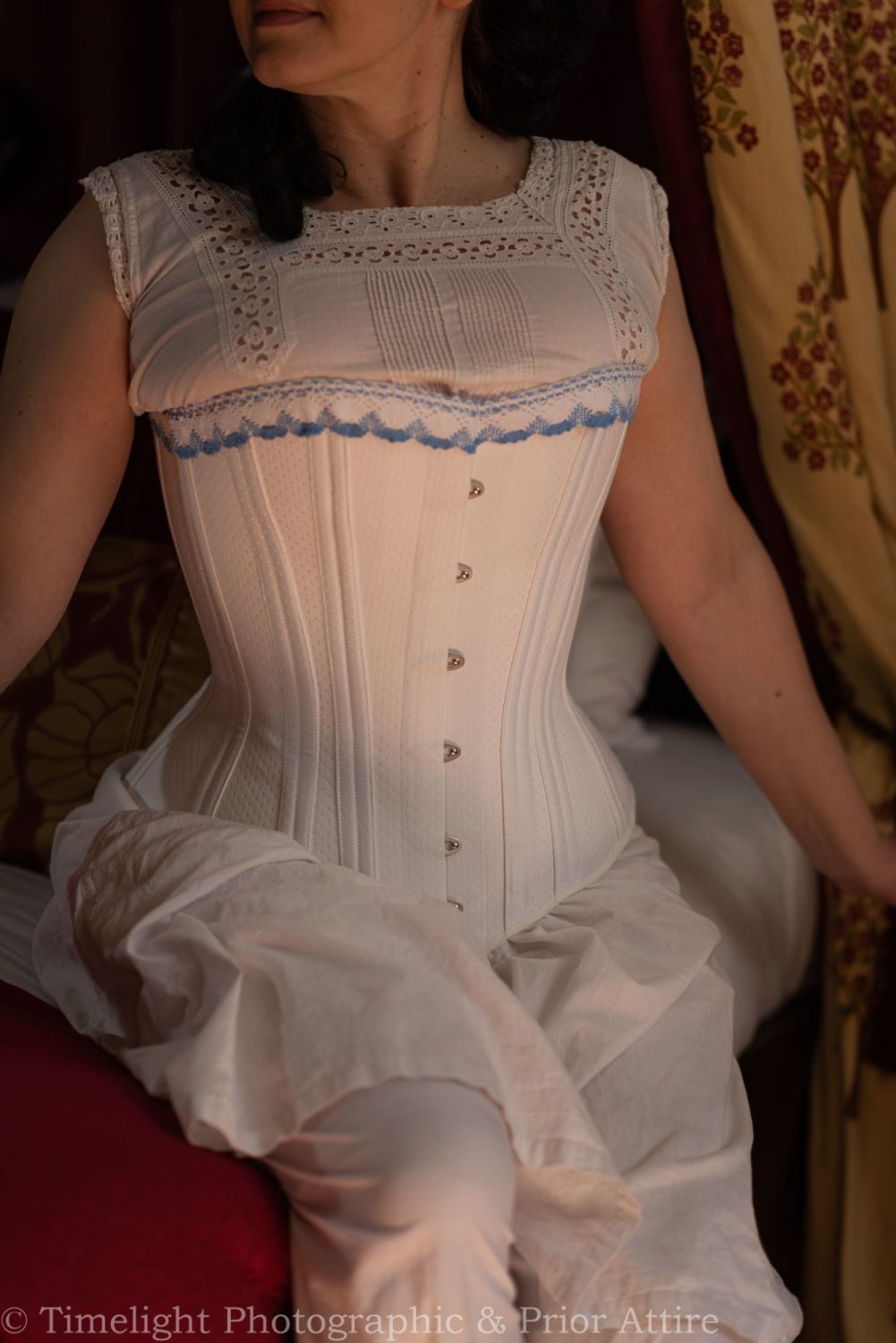
Corsetry is currently experiencing a bit of a revival – which is great ( if you still think they are torturous, rib-breaking, garments-from-hell, please read this first…).
However, since they were out of fashion for quite a while, people nowadays are often at a loss as to what to look out for in a good corset. Our modern clothing has ease added, whereas in corsetry ‘negative ease’ is used – and because of that, as well as shape-creating issues, it is important to understand how corsetry works, and how to be able to distinguish between a crap import, a well made but badly fitted corset, or a corset that is ticking all the boxes – well made, well fitted, suitable for the purpose and, of course, pretty :-). In both my professional capacity as a corsetmaker as well as a regular corset wearer, I have come across a number of questions from folks who are new to this – hence the post!
Obviously, the best solution is to get your corset made bespoke, with the pattern drafted to your measurements, with multiple fittings, and in materials/colours/ decoration of your choice. But this is an expensive affair and not everyone can afford it. ‘Made to measure’, where a generic corset pattern is adapted to your measurements is the next option down, and is a good compromise between ready made and bespoke! Buying off the rack is definitely the cheapest option – but fraught with dangers. However, once you know what to look for, you will be able to get a quality readymade corset that works for you!
We will first look at some generic do’s and don’ts and then add more specific information relevant to historical, modern and sport corsetry.
General rules in buying corsets.
- If possible, buy from recommended sources – corsetieres/ shops recommended by corset wearers. Check testimonials, reviews and feedback before you commit. Don’t be fooled by often artificial ratings on amazon etc – Lucy’s Corsetry channel is great for checking the quality of corset brands!
- Make sure you can see exaples of the items being worn. If the maker only presents their work on dummies or on pillows, there is no saying how the corset will look and what it will behave like on a human body. It also shows that the pattern was either generic, or drafted to the dummy, not to a human. True, sometimes makers don’t have models available in a suitable size; that is fine – you don’t have to see every single corset shown on a body, just make sure you can see at east some of their work being actually worn. Even the expensive, beautifully made corsets that look amazing on a dummy may not fit a human body at all – leaving you with a rather dear, fashionable pillow decoration.
- Price – let us just have it out from the beginning. A cheap, off the peg £30 corset would not even begin to cover the materials needed for a quality item. Perfect as a one-off fancy wear stuff, worn loose rather than snug (90% of big manufacturers corsets are alas, rather sad tubes, with minimal waist…), but a big no- no if you are after quality. Also, these can often be traced to rather unethical sewing sweatshops, where the workers’ pay is abysmal, conditions attrocious and hours long…. for a decent off the peg look for an item raging from roughly £100 to £400, or so. The price will depend on style, materials, decoration etc -if you want a Swarowski-covered one or one in silk with elaborate flossing, it may be more…
- Shape. As mentioned above, many off the peg, big retailer stuff has minimal waist reduction. People buy them based on the waist size, not realising that if the waist fits, the hip spring (or lack thereof…) will usually mean a rather uncomfortable item on your hips, and usually on your ribs too. As a result you cannot lace properly to achieve the support where it is needed! Look for the pictures of the corset on its own, not on a model here – the commercial photos are usually edited to look great. The best way is to see it on another client – if the shop has feedback where clients can post photos ( like Amazon, Etsy), that’s where it is best to look. Check the measurements of the corset too – if the difference between waist and hip is small, you are most likely dealing with a tube…. alas, more and more companies dont give hip measurement at all – always a very suspicious sign! Just type corset into Amazon and have a look….. hardly anybody bothers, (random example here). The best shops will give you the measurements of the corset itself, as well as the optimal target measurements of the uncorseted body as a guide.
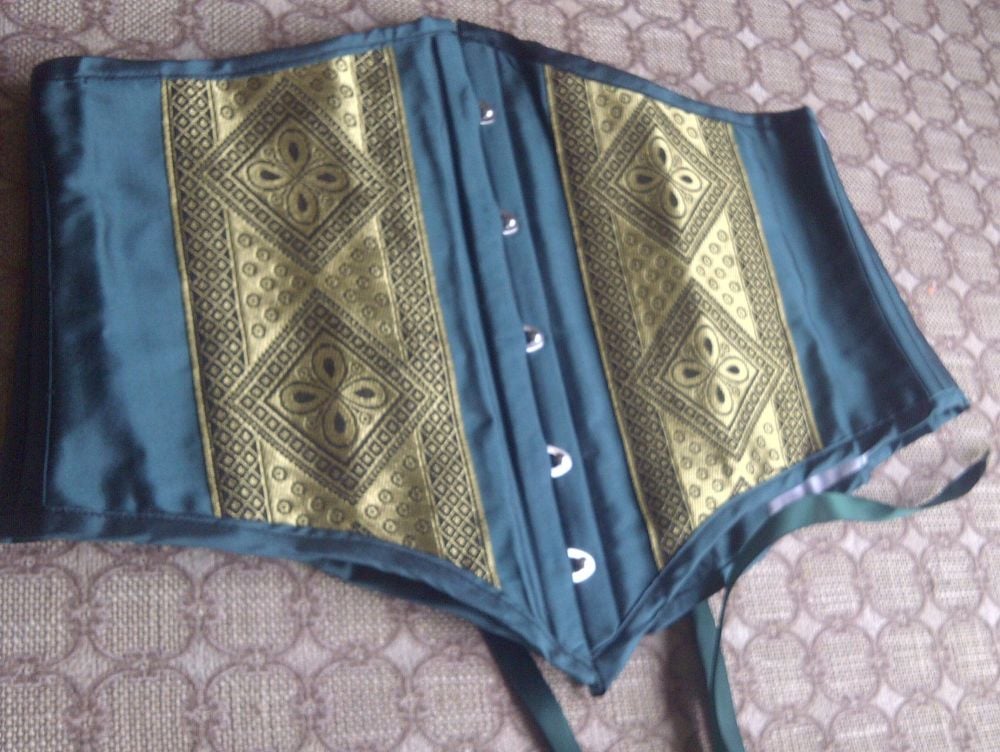
My first ever underbust was a tube too…. and for comparison, a few years later, and have developed my first modern pattern – not a tube…
And the more ‘ padding’ you have, the easier it is to get an hourglass shape…. corsets are not only for size 10 – they actually work much better for bigger sizes, as long as the correct waist to hip ratio is built in…
Here a client size 20, in a corset, comfortably laced ( she normally laces tighter for more support) rocking her curves!
- Fabric. Here a lot will depend on the purpose of your corset. Polyester satin is great for fashion stuff worn for a night out from time to time, but if you are a regular wearer, you will need natural, breathable fabrics. Again, cheap stuff is usually poly brocades, taffeta and viscose lining (if included) – resulting in not only a tube but a sweaty one too, especially if worn directly on the body. Still, if it is a fashion item , and the lining etc is natural, they are not too bad and can be a pretty option. The strength layer is vital though, and usually a cotton coutil, broche, twill, etc is used (some are cotton with 5% viscose etc – that is great too! Modern corsetry uses mesh, bobbinet, and sometimes stretch fabrics as well. Please note that mesh fabric is still plastic, and if worn directly on a body, it will provoke sweating. If the seller doesn’t state much apart from ‘pretty brocade’ or ‘lovely taffeta’ be wary – they are most often polyester fibres. Always ask for the fibre content if in doubt.
- wrinkles – sometimes unavoidable, but generally the smoother the corset the better! with some sport corsets, with some panels sewn on the bias, some on straight grain, wrinkles do tend to appear more often – as long as it is comfortnale, you are good though!
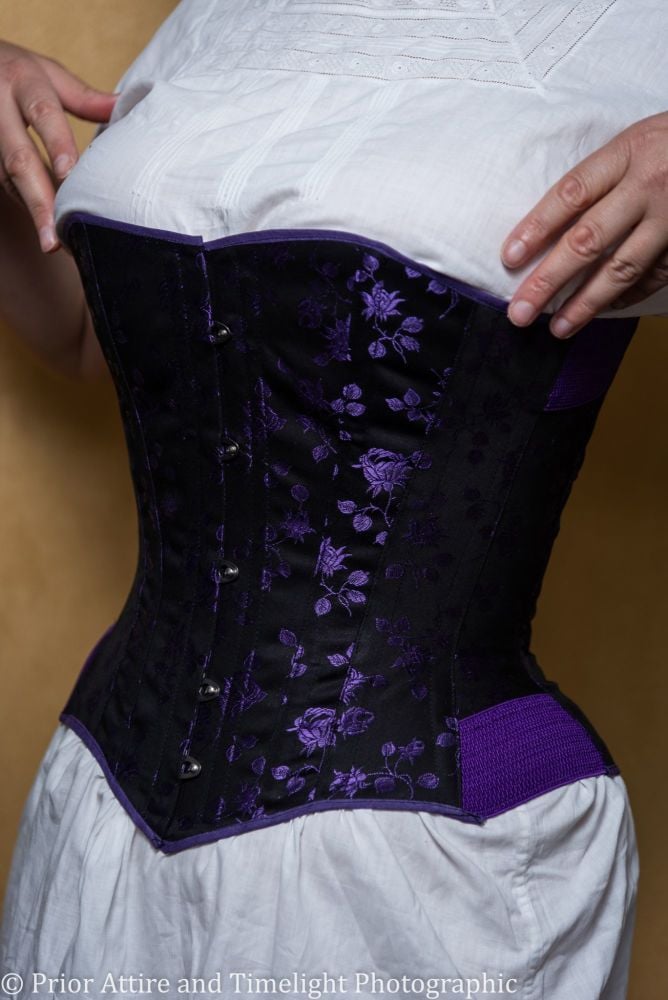
- Boning. Currently the most-used boning is flat steel, spiral steel and synthetic whalebone. Rigilene boned corsets? Just save your money and avoid! Most good quality corsets wil use flat steel on front and back and spiral at the sides – spiral steel bends in all directions really, so it is not only more comfortable, but gives a nicer shape too!
- Synthetic whalebone, though not perfect, will have its uses – lots is used for historical corsetry to great effect.
- Also, bear in mind that more boning means more comfort and usually a better shape too – 4 bones per side won’t amount to much, and you will feel them much more – and not in a good way. The standard is 8 – 14 per side, with fully boned corsets going for 20 or more. Some people use the rule of ‘no more than 3inches between bones’, and it is a good start, though a lot will depend on the cut, fabric and the boning used.
- Flossing. This decorative stitching at the end of the bone serves an important function. It stabilises the bone in the channels, and offers an early warning system when the bone starts poking through. Not that important in fashion items worn from time to time, but for regular wearers, or sport corsets, I think it is vital. It is much easier to repair a broken flossing stitch than a hole in the fabric….
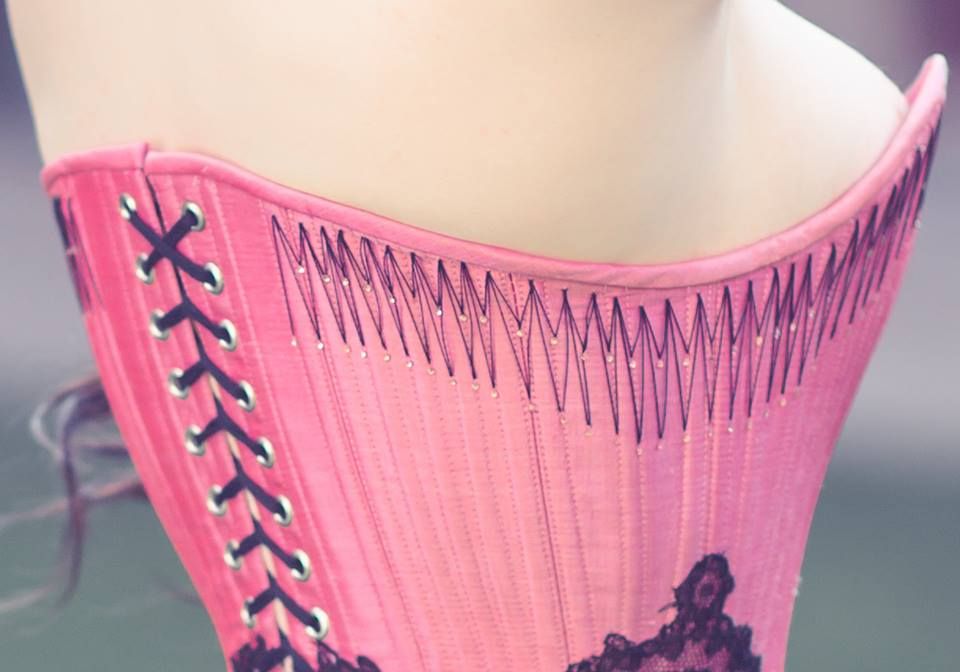
Amazing flossing detail on this modern corset by Sew Curvy Couture –
model : Threnody in Velvet photographer: Chris Murray
- Waist stay – takes some of the strain in the most important place – the waist. A quality corset would have one. below – a modern corset in mech and lace, with a visible waist stay
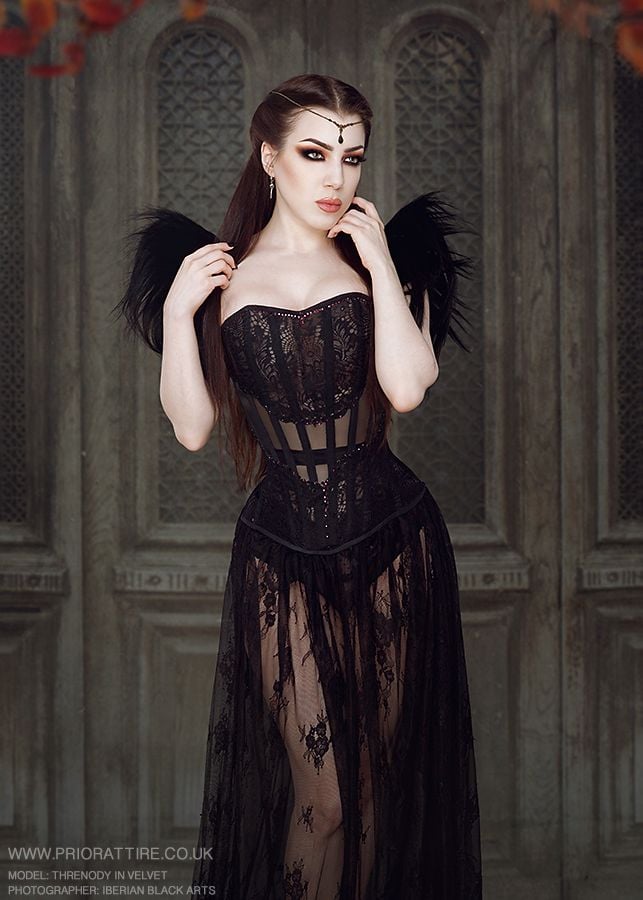
- Lacing – as long as it is sturdy, with minimal stretch, it is fine. I find the cotton lacing is my favourite – good quality ribbons work too, though they are a bit more slippery.
Most of the above you can ascertain from the website shop or in person, just by looking. If you are in a real shop, try a corset on and continue your evaluation. If you bought the corset from an online shop, remember that you can return in within 21 days, if unworn (apart from the first try on), so do have a good fitting session at home once it arrives, too.
- Do lace gently. If the corset closes fully without much fuss, it is too big! If the gap at the back is bigger that 3 inches – it is too small. Below – a size too small, plus a bit too high too!
- A well fitted corset should feel like a gentle, yet firm hug – supporting your back and your boobage, with only slight restriction to your movement (if any!). If you experience any discomfort, it doesn’t fit! Your ribcage should be snug, but you should be able to draw a big breath easily.
- Your assets should be either supported with minimal squeeze (historical corsets, Victorian and edwardian) or well contained within the upper part of an overbust corset or cups. If they are flowing over, a bigger chest size is needed. Stays will support and flatten the boobs too – as will some sports corsets – our corseted waistcoats flatten the chest a fair bit to limit bouncing when riding!
- If you sit in the corset and it digs into your underarms – it is too long at the sides. If the hips feel constricted when sitting, more hip spring is needed (especially for sport corsets).
- lacing at the back should be parallel, though a slight V or inverted V is not that much of an issue. a () or )( shape however means trouble – a great post about the lacing gap here
- In general, move a bit in it. Stand, sit, bend, do a little dance – if it fits well, it will feel great.
A few examples…
Perfect overbust fit in a modern corset- no spillage, all well contained. Part of the new collection by Sew Curvy Couture ,Inaglo photography and modelled by Miss Deadly Red
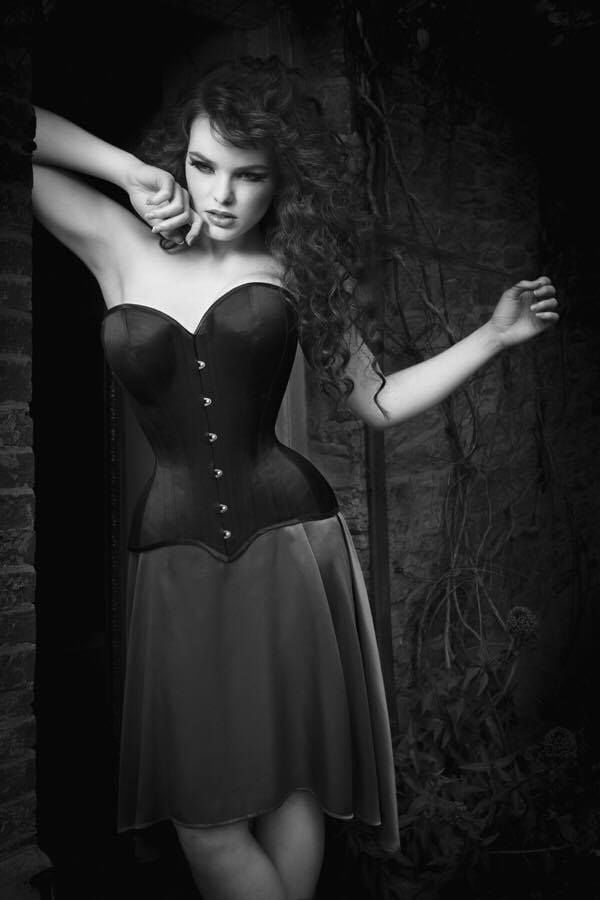
Our corsetted waistcoats that do flatten the assets a bit – designed especially for well endowed riders…
Historical corsets
Look for all the above, but with a couple of more in-depth points
*It goes without saying – natural materials are a must. Cotton twill, drill, sateen, satin, cambric, coutil, broche, leather, silk, wool, linen – all were used to great effect. below – silk satin with cotton coutil as strength layer
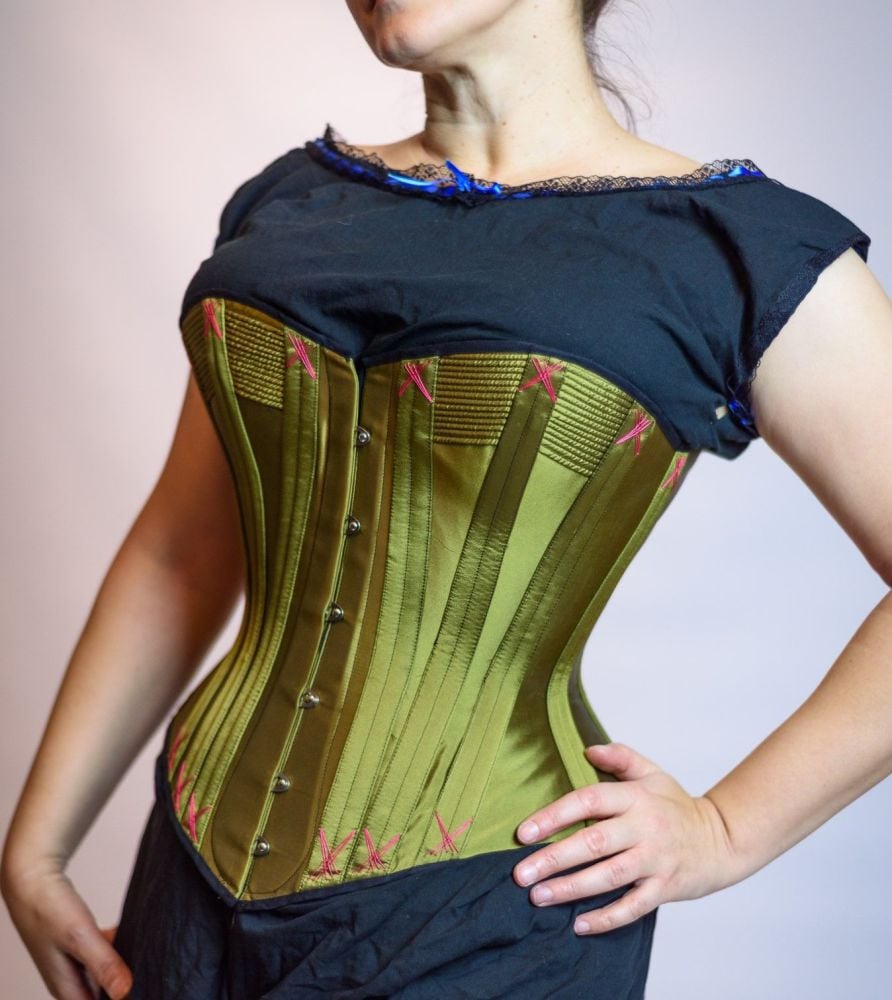
* Boning – traditionally baleen , reed, cane, and later on steel would be used, as well as coraline boning. Nowadays sythetic whalebone is a good equivalent, cotton cording too!
- Whereas stays have a floating lining, not many hisorical corsets do – they are usually one or two layer affairs. They were always worn over the chemise, so lining per se was not needed that much.
- MOst vixgtorian corsetry is mid bust- for a good reason! overbusts, containing the breast snuggly, started to be used especially in the modern era when corsets are worn directly on the body and worn outside of ones boudoir – i.e. to be seen.Stays, Victorian and Edwardian corsets are midbust – supporting the girls from the underneath, and any subtle ‘overflow’ is contained by the chemise. Midbust corsets are far more comfortable for day-to-day activities and much easier to sit in – sit in an overbust and it not only rides up your armpits, your boobs seem to be having a nice conversation with your chin too…. Underbusts started to appear in late Victorian era as sport corsets for exactly the same reason, though probably destined for the smaller-chested ladies…
- Metal eyelets and grommets from roughly 1830, slot busks from circa 1840.
Riding corsets and other sport corsets, both Victorian and modern.
- The shape. Riding corsets will be shorter in the busk ( especially if you are planning to do a lot of jumping whilst aside..) and the hip, to facilitate movement. Modern corsets can have elastic inserts at the hip and underarm. Hip measurements can actually be a bit more than usual – remember you will be sitting, and flesh does move up and around more when seated. Cheap modern tubes are torture in a saddle….
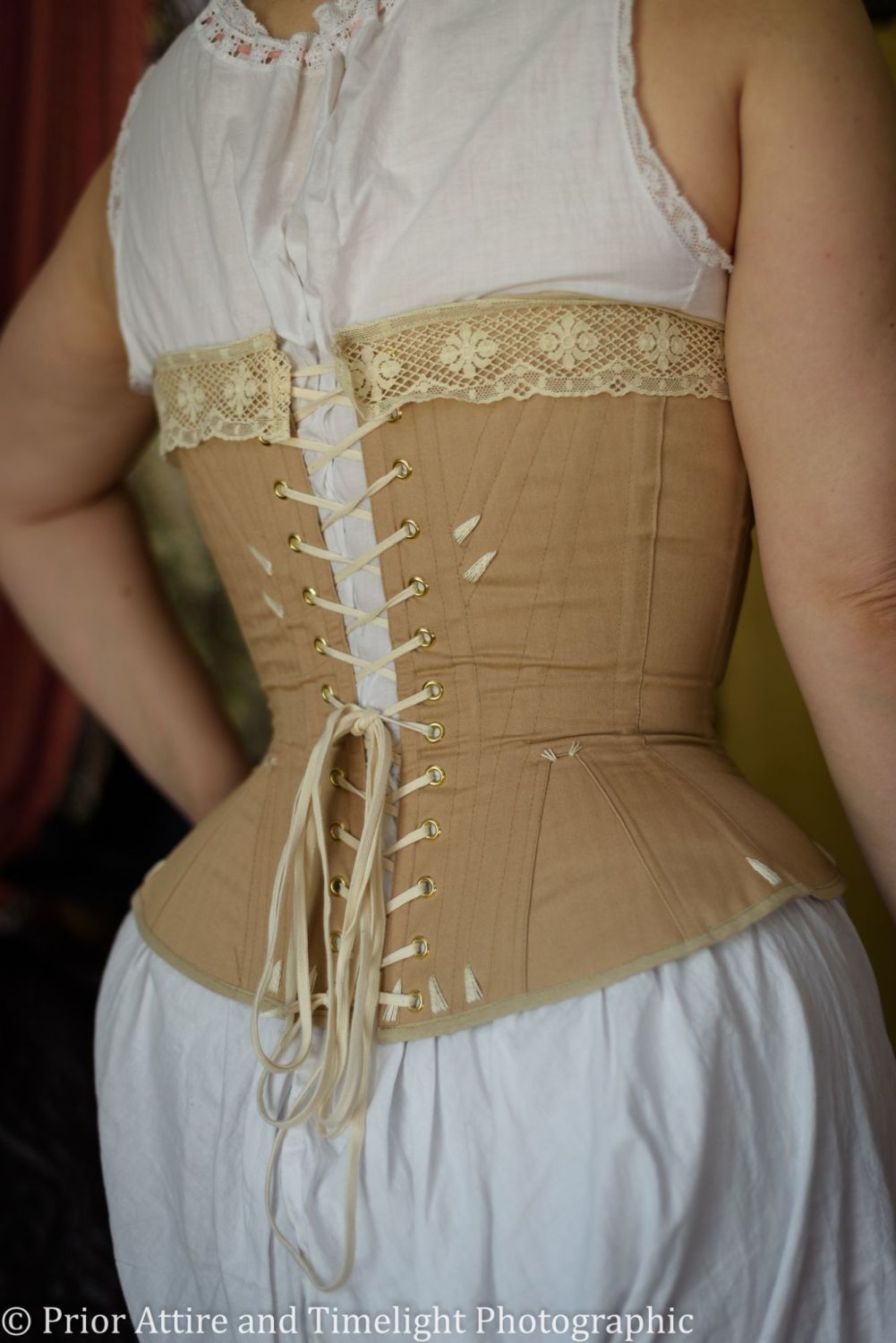
- Choose lightweight but sturdy natural fabrics – cotton coutil, broche, sateen, cambric, etc – steer clear of polyester, it will be hot! Bigger plastic mesh can be used however, for ventilation – they work quite well too.
- Flossing will prolong the life of the corset.
- Strong corsetry zips work for modern riding corsets!
- Busk should be shorter and sturdy, often reinforced with additional boning just next to it or, in some cases with an underbusk
- corset above - a replica of a 1885 model – a great fit. Short front, high hip, sides not too high, 2inch lacing gap at the back
*Tightlacing.
In my opinion, anything involving extreme shape is best done bespoke. A badly fitted corset worn for tighlacing and waistraining can cause medical issues. It is possible to find a good quality online as off the peg, and if you find a brand that fits you, that is great, but in doubt, go bespoke. If you need a reduction bigger than 5-6’’, go bespoke for sure, it will be some serious engineering and several fittings!
Below a bespoke male tightlacing corset – with a 20″ waist, natural waist 34″! This corset is used on a daily basis, for physical work. Made bespoke by Sew Curvy Couture
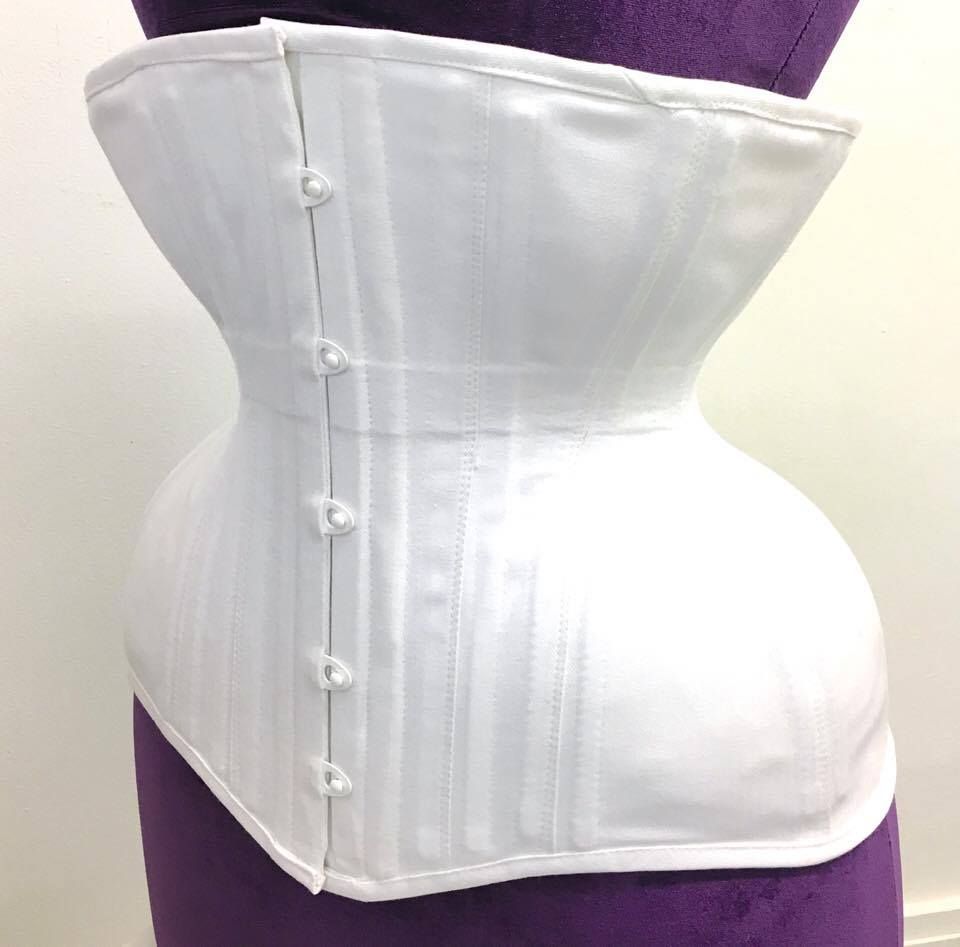
To conclude – Good corsets are not cheap – but will last you longer, wear better and won’t cause any issues. It is worth investting in quality if you are thinking of a more regular wear. I hope that my guide will help you choose the best options!
For a list of corsetieres worldwide check out Lucy Corsetry map!